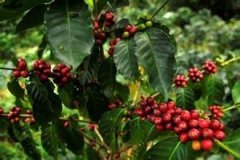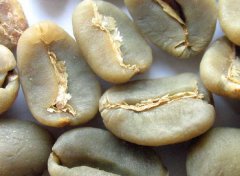Basic knowledge of specifications and grades of coffee beans

Coffee beans are graded according to different grading systems in different countries. Some of these classification techniques are too complex to be effective, such as the Haiti classification, while the classification apparatus used in Brazil is necessary despite its complex structure. In general, there are six export grades, the highest being SHB (strictly hard bean)-extra hard coffee beans, or highland coffee beans, grown at altitudes of not less than 400 meters.
1, the name of the expression
(1) Name of port of export
The route of shipment can be known from the name of the port of exit indicated. Coffee of the same origin or brand has a certain route, so it is also exported from the same port. For example, if the label is Brazil-Santos, it means that coffee is exported from Santos. Except for those marked "mocha." Some Yemeni coffees still use the port name Mocha (Mocha Madari). In addition, Ethiopian coffee is also known as "haramocha".
(2) Original name, variety name
Only coffee produced in countries such as Arabia will be omitted, but if Arabica and Robusta species are shipped, the variety name will be indicated below the country name. Examples: Gamelon-Arabica, Uganda-Robusta, etc. In addition, there are Mendo Norbert, Blumun and other varieties of name labels.
(3) Name of mountain
Blue Mountain (Jamaica), Jiayu Mountain (Indonesia), Coral Mountain (Costa Rica), Crystal Mountain (Cuba), Kilimanjaro Mountain (Tanzania), Mawindohagen (Papua New Guinea) and so on, are very famous brands.
(4) Name of exporter
Indicates the name of the ship exporting coffee beans, exporter, etc.
2. Specifications and grades
At present, each producer country has its own independent standards. The most commonly used criteria are as follows:
(1) Washable, non-washable
Washing type: In the sink, after rubbing with water and utensils, remove pulp and colloid and dry, called washing type coffee beans, its quality is uniform.
Non-washing type: natural drying in sunlight, to remove the pulp and pericarp husker, its quality is unstable.
(2) Flat beans, round beans
Coffee fruit is composed of two oval seeds facing each other. One side of the joint is a flat joint, called a flat bean. But there is also a round seed, called round beans, which taste no different. Ripe and red coffee cherries have multiple structures. In the middle is the precursor of coffee beans, light green seeds.
Generally speaking, the fruit of coffee is composed of two oval seeds opposite each other. The other side of the joint is a flat joint, so it is called flat beans. But there are also ones that consist of a round seed and taste no different.
Important Notice :
前街咖啡 FrontStreet Coffee has moved to new addredd:
FrontStreet Coffee Address: 315,Donghua East Road,GuangZhou
Tel:020 38364473
- Prev

Classification of coffee bean varieties how to grade coffee beans
Types of coffee beans 1. Arabica coffee (CoffeeArabica) (1) Arabica coffee has a varied and broad potential flavor. Arabica coffee produced in different regions, different elevations and different climatic areas usually has its own characteristics. It smells like grass when it is not roasted. After proper roasting, it shows fruit.
- Next

How to inspect raw coffee beans by hand
It is also important to check the origin and specification of raw coffee beans by hand, and to touch them directly to observe their appearance and feel. To judge the quality of raw coffee beans by appearance, you must have a certain degree of experience, but as long as the type is certain, you can be familiar with it. Color: no spots, light green and bright, for the beautiful color of coffee beans, and this is also related to the harvest. shape
Related
- Beginners will see the "Coffee pull flower" guide!
- What is the difference between ice blog purified milk and ordinary milk coffee?
- Why is the Philippines the largest producer of crops in Liberia?
- For coffee extraction, should the fine powder be retained?
- How does extracted espresso fill pressed powder? How much strength does it take to press the powder?
- How to make jasmine cold extract coffee? Is the jasmine + latte good?
- Will this little toy really make the coffee taste better? How does Lily Drip affect coffee extraction?
- Will the action of slapping the filter cup also affect coffee extraction?
- What's the difference between powder-to-water ratio and powder-to-liquid ratio?
- What is the Ethiopian local species? What does it have to do with Heirloom native species?

